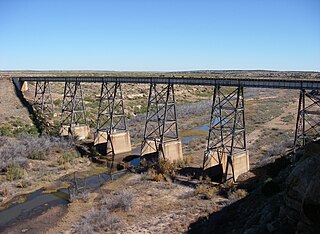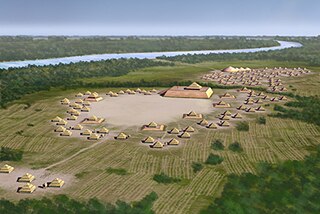Related Research Articles

Tulsa County is a county located in the U.S. state of Oklahoma. As of the 2020 census, the population was 669,279, making it the second-most populous county in the state, behind only Oklahoma County. Its county seat and largest city is Tulsa, the second-largest city in the state. Founded at statehood, in 1907, it was named after the previously established city of Tulsa. Before statehood, the area was part of both the Creek Nation and the Cooweescoowee District of Cherokee Nation in Indian Territory. Tulsa County is included in the Tulsa metropolitan statistical area. Tulsa County is notable for being the most densely populated county in the state. Tulsa County also ranks as having the highest income.

Muskogee County is a county located in the U.S. state of Oklahoma. As of the 2020 census, the population was 66,339. The county seat is Muskogee. The county and city were named for the Muscogee (Creek) Nation. The official spelling of the name was changed to Muskogee by the post office in 1900. Muskogee County is part of the Muskogee, OK micropolitan statistical area, which is included in the Tulsa-Muskogee-Bartlesville combined statistical area.
Haileyville is a city in Pittsburg County, Oklahoma, United States. The population was 716 at the time of the 2020 United States census.

The Arkansas River is a major tributary of the Mississippi River. It generally flows to the east and southeast as it traverses the U.S. states of Colorado, Kansas, Oklahoma, and Arkansas. The river's source basin lies in Colorado, specifically the Arkansas River Valley. The headwaters derive from the snowpack in the Sawatch and Mosquito mountain ranges. It flows east into Kansas and finally through Oklahoma and Arkansas, where it meets the Mississippi River.

The Canadian River is the longest tributary of the Arkansas River in the United States. It is about 1,026 miles (1,651 km) long, starting in Colorado and traveling through New Mexico, the Texas Panhandle, and Oklahoma. The drainage area is about 47,700 square miles (124,000 km2).

The Mississippi Company was a corporation holding a business monopoly in French colonies in North America and the West Indies. In 1717, the Mississippi Company received a royal grant with exclusive trading rights for 25 years. The rise and fall of the company is connected with the activities of the Scottish financier and economist John Law who was then the Controller General of Finances of France. Though the company itself started to become profitable and remained solvent until the collapse of the bubble, when speculation in French financial circles and land development in the region became frenzied and detached from economic reality, the Mississippi bubble became one of the earliest examples of an economic bubble.

The Wichita people, or Kitikiti'sh, are a confederation of Southern Plains Native American tribes. Historically they spoke the Wichita language and Kichai language, both Caddoan languages. They are indigenous to Oklahoma, Texas, and Kansas.

Spiro Mounds is an Indigenous archaeological site located in present-day eastern Oklahoma. The site was built by people from the Arkansas Valley Caddoan culture. that remains from an American Indian culture that was part of the major northern Caddoan Mississippian culture. The 80-acre site is located within a floodplain on the southern side of the Arkansas River. The modern town of Spiro developed approximately seven miles to the south.

The Tawakoni are a Southern Plains Native American tribe, closely related to the Wichitas. They historically spoke a Wichita language of the Caddoan language family. Currently, they are enrolled in the Wichita and Affiliated Tribes, a federally recognized tribe.
Jean-Baptiste Bénard de la Harpe was a French explorer who is credited with using the name "Little Rock" in 1722 for a stone outcropping on the bank of the Arkansas River used by early travelers as a landmark. Little Rock, Arkansas was subsequently named for the landmark.
Le Poste des Cadodaquious was a small French fort founded in 1719; it was located northwest of Texarkana, Texas in today's Bowie County. Recent analysis suggests that the site was somewhere on the escarpment near either Everett or Barkman.

The history of Oklahoma refers to the history of the state of Oklahoma and the land that the state now occupies. Areas of Oklahoma east of its panhandle were acquired in the Louisiana Purchase of 1803, while the Panhandle was not acquired until the U.S. land acquisitions following the Mexican–American War (1846–1848).
Martín de Alarcón was the Governor of Coahuila and Texas from 1705 until 1708, and again from 1716 until 1719. He founded San Antonio, the first Spanish civilian settlement in Texas.
The Nanatsoho were a Native American tribe that lived at the border of Arkansas, Oklahoma, and Texas.

Etzanoa is a historical city of the Wichita people, located in present-day Arkansas City, Kansas, near the Arkansas River, that flourished between 1450 and 1700. Dubbed "the Great Settlement" by Spanish explorers who visited the site, Etzanoa may have housed 20,000 Wichita people. The historical city is considered part of Quivira.
The Taovaya tribe of the Wichita people were Native Americans originally from Kansas, who moved south into Oklahoma and Texas in the 18th century. They spoke the Taovaya dialect of the Wichita language, a Caddoan language. Taovaya people today are enrolled in the Wichita and Affiliated Tribes, a federally recognized tribe headquartered in Anadarko, Oklahoma.

The Waco of the Wichita people are a Southern Plains Native American tribe that inhabited northeastern Texas. Today, they are enrolled members of the federally recognized Wichita and Affiliated Tribes, headquartered in Anadarko, Oklahoma.
Three Forks Oklahoma is an imprecisely defined area of what is now eastern Oklahoma, around the confluence of the Arkansas, Verdigris, and Grand Rivers.
Richmond is an unincorporated community in Little River County, Arkansas, United States.

Mildred Mott Wedel was an American scholar of Great Plains archaeology and ethnohistory. She was one of the first professionally trained female archaeologists and was distinguished in her field. Many of her publications were about the Siouan people, and wrote several important articles on French exploration in the Central and Southern Plains.
References
- 1 2 3 Odell, George H. "Lasley Vore Site." Encyclopedia of Oklahoma History and Culture. Accessed January 26, 2017.
- 1 2 3 4 "Oklahoma's Past - The Lasley Vore Site." Oklahoma Geological Survey. Undated. Accessed January 26, 2017.
- ↑ Odell 2002, p. 41
- ↑ Odell 2002, p. 43 - 44
- ↑ Odell 2002, p. 232.
- ↑ Odell 2002, p. 37
- ↑ Eifler, Mark A. "Calumet Ceremony." Encyclopedia of the Great Plains. Accessed January 28, 2017.